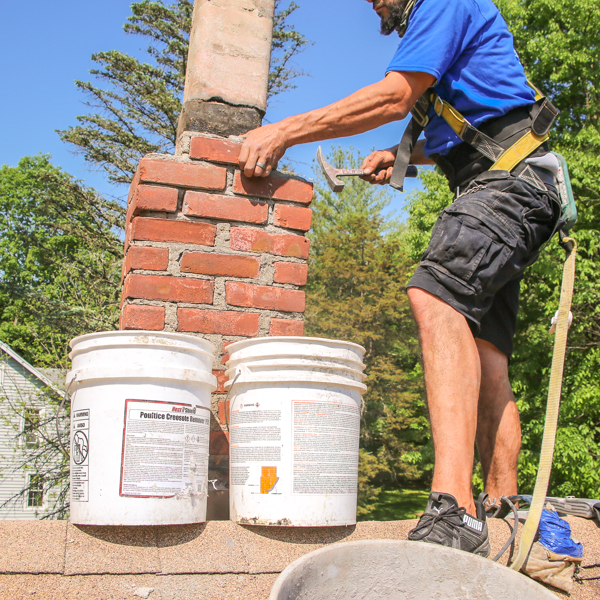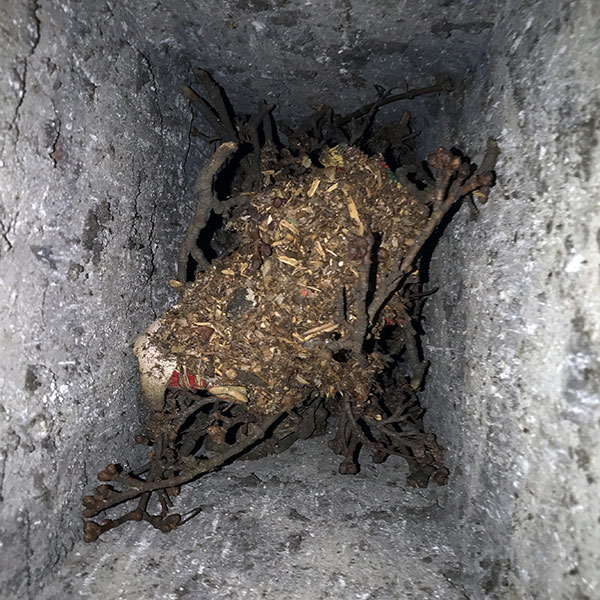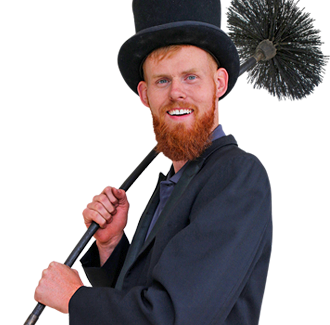Do you have any of these 7 Common Chimney Problems?
You know what they always say – there is a first time for everything. It is especially true for chimneys. So, even though your chimney may appear safe and sound, it may be concealing these seven relatively common but potentially dangerous chimney problems.
 Spalling Bricks
Spalling Bricks
The freezing winter weather followed by warm and humid summers that are common in the Hudson Valley area can damage masonry chimneys over time, causing brick and mortar to crack, crumble, or spall exposing the chimney to water leaks and other hazards. The main issue with brick spall is that if it is not repaired timely, it will continue to worsen and can ultimately destabilize the structure resulting in a partial or complete chimney collapse.
Damaged Chimney Cap or Chase Cover
The chimney cap is like a rain hat that helps to prevent rainwater from leaking into the flue. Some chimney caps have a mesh screen that will also keep animals and debris from blocking the flue pipe so that smoke and fumes can safely exit the chimney. If the chimney cap or chase cover is damaged or missing, water and pests can infiltrate the chimney leading to foul odors, mold, and chimney repairs. Chimney leaks can also damage the interior masonry and flue liner resulting in extensive repairs.
Chimney Crown Cracks
The cement chimney crown tops the entire masonry structure deflecting precipitation from the chimney. It also typically has a drip edge for additional protection against moisture intrusion. However, inclement weather, settling, and normal wear and tear can cause cracks to develop on the crown’s surface. Water can seep through these tiny crevices and damage the interior masonry walls and other components. However, homeowners are often unaware of cracks in the chimney crown until it is discovered in a routine chimney inspection or when water damage caused by a chimney leak occurs.
Worn Flashing
Chimney flashing is the sheet metal that provides a water-tight seal where the chimney meets the roof. Environmental conditions such as heavy rains, hail, and ice can accelerate its deterioration, causing it to warp or rust, allowing moisture to seep through the gap that can cause damage to the attic, ceiling, and chimney. Improper flashing installation can also cause it to fail, resulting in a chimney leak.
Creosote Build-up
Creosote is a carbon substance produced during the combustion of solid and fossil fuels that sticks to the interior chimney walls and components as the gases vent out the flue. Without regular chimney sweeping, creosote hardens into a thick, tarry, and very flammable material. Excessive build-up increases the fire risk, restricts the airflow through the narrow smoke chamber, and clogs the areas around the chimney cap. It can also lead to a dangerous backdraft that forces smoke and carbon monoxide fumes into the living room.
Fire Damage
It doesn’t take that much hardened creosote to ignite a chimney fire. The intense heat in the fireplace or a hot ember flying in the flue is all it takes to spark a fire. Since they are typically small, many homeowners are often unaware they had a chimney fire. However, even a small chimney fire can scorch or damage the flue liner and interior masonry. The flue liner and masonry that is weakened due to a previous fire can increase the risk of a subsequent chimney fire spreading to other parts of the house that can cause significant property damage, including injuries and death.
 Flue Blockage
Flue Blockage
In addition to excessive creosote build-up, small animals and debris can enter the flue blocking the escape of harmful fumes. Flue blockages are more likely to occur when a damaged or missing chimney cap is not repaired or replaced. When the hot gases cannot exit the chimney, the draft reverses, known as a backdraft that pushes the harmful material out of the fireplace into the living space exposing occupants to irritating smoke, hot embers, and toxic carbon monoxide gas.
Annual Chimney Inspections
National fire and safety experts recommend all homeowners with gas and wood-burning fireplaces, or heating stoves have annual chimney inspections. Only a certified chimney professional has the training and expertise to determine whether your chimney, vents, and attached heating appliances are safe to operate. Hudson Valley Chimney wants everyone to have a safe winter season. We service Brewster, Fishkill, Woodstock, and communities throughout the Hudson Valley region. Call to schedule your chimney inspection today!








